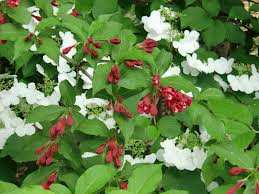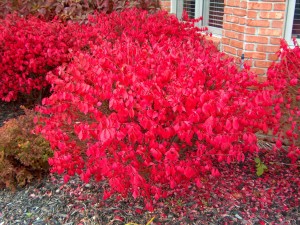Posts Tagged shrubs
Why Fall is the Best Time to Plant Trees and Shrubs

1. Cooler Temperatures, Less Stress
2. Warm Soil Promotes Root Growth
3. Less Watering Required
4. Fewer Pests and Diseases
5. Steps for Successful Fall Planting
- Choose the Right Plant: Select species and varieties that are well-suited to your region and site conditions.
- Dig Properly: Make the hole twice as wide as the root ball, but no deeper. Loosen the soil on the sides to encourage outward root growth.
- Plant at the Correct Depth: The top of the root ball should be level with the surrounding soil.
- Backfill and Water Well: Replace the soil, gently tamping it down to remove air pockets. Water thoroughly after planting.
- Mulch: Add a 2–3 inch layer of mulch around the base (but not against the trunk) to retain moisture and regulate soil temperature.
6. Plan for Ongoing Care
Trust Your Local Experts
August Planting Guide: Best Flowers and Shrubs to Add Now
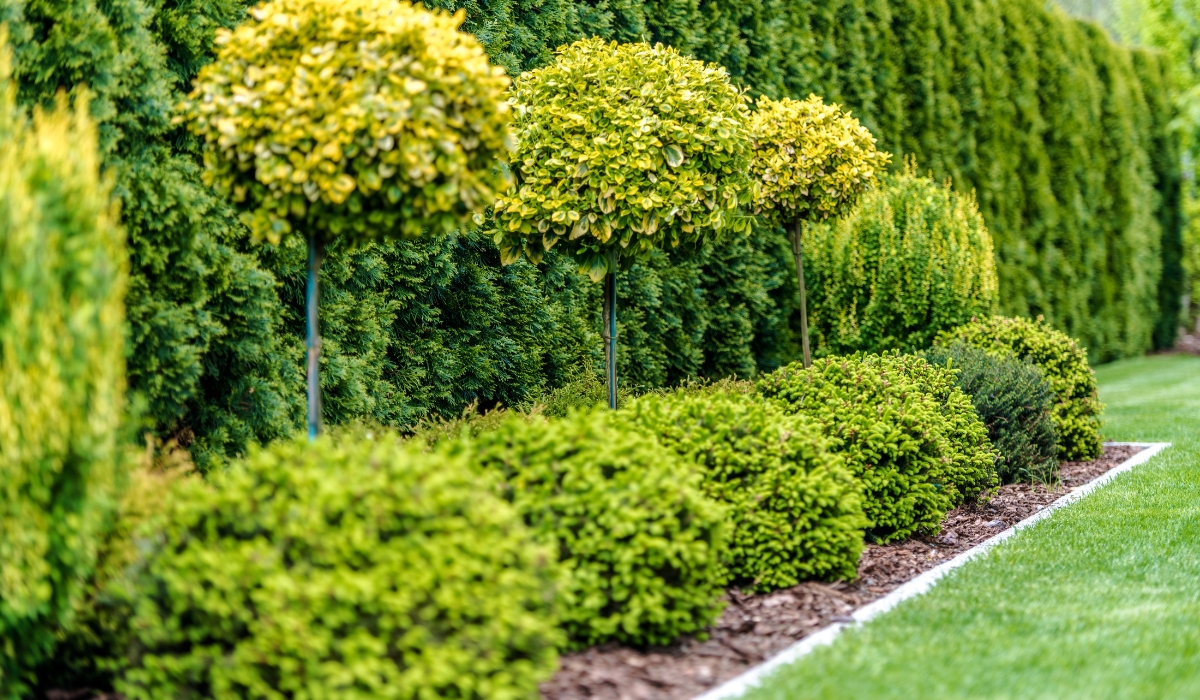
1. Heat-Tolerant Annuals for Instant Color
2. Late-Blooming Perennials for Season-Long Beauty
- Loosen the soil and mix in compost for added nutrients.
- Space plants according to their mature size.
- Water thoroughly and mulch around the base to conserve moisture.
3. Shrubs That Shine in Late Summer
- Dig a hole twice as wide as the root ball but no deeper.
- Place the shrub so the top of the root ball is level with the soil surface.
- Backfill, water deeply, and mulch to retain moisture.
4. Tips for Successful August Planting
- Water new additions deeply and regularly during their first few weeks, as summer heat can quickly dry out the soil.
- Mulch around the base of new plants to help conserve moisture and suppress weeds.
- Avoid fertilizing immediately after planting; let roots settle first, then feed lightly in early fall if needed.
5. Plan for Fall and Beyond
Expert Help When You Need It
Fall Planting Guide for California: Sowing the Seeds of Spring
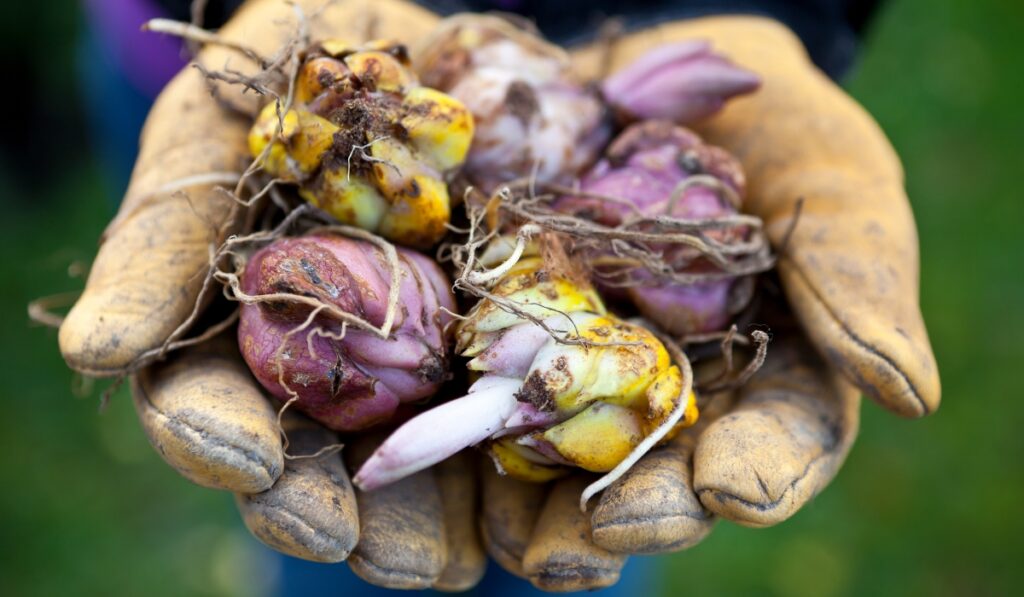
As summer’s heat begins to fade and the days grow shorter, September marks the perfect time to start planting for a vibrant spring garden in California. The mild temperatures and occasional rain showers create ideal conditions for seeds and young plants to establish strong roots before winter dormancy. At DK Landscaping, we’re passionate about helping you make the most of this planting season, ensuring your garden bursts with color and life come springtime.
Flowers to Plant in September
Embrace the anticipation of spring by planting these stunning flowers now:
- Bulbs: September is prime time for planting spring-blooming bulbs like tulips, daffodils, hyacinths, crocus, and anemones. These beauties will add pops of color and cheer to your garden as the days grow longer.
- Wildflowers: Consider sowing a wildflower mix for a naturalized and pollinator-friendly display. California poppies, lupines, and clarkias are excellent choices for a vibrant spring meadow.
- Cool-season annuals: Pansies, violas, primroses, and snapdragons thrive in the cooler temperatures of fall and winter, providing early color to your garden.
- Perennials: Fall is an ideal time to divide and transplant perennials or plant new ones. Consider options like columbine, coreopsis, and penstemon for long-lasting beauty.
Vegetables to Plant in September
Extend your harvest season and enjoy fresh produce throughout the fall and winter by planting these vegetables:
- Leafy Greens: Lettuce, spinach, kale, arugula, and Swiss chard thrive in the cooler temperatures of fall and winter.
- Brassicas: Broccoli, cauliflower, Brussels sprouts, and cabbage are perfect for fall planting, as they prefer milder conditions.
- Root Vegetables: Carrots, beets, radishes, and turnips can be sown in September for a late fall or winter harvest.
- Alliums: Plant garlic and shallots in September for a flavorful harvest next summer.
Shrubs to Plant in September
Add structure and year-round interest to your landscape by planting shrubs in the fall:
- Evergreen Shrubs: Ceanothus, manzanita, and toyon provide beautiful foliage and attract pollinators.
- Flowering Shrubs: Consider planting camellias, azaleas, and rhododendrons for stunning spring blooms.
- Fruiting Shrubs: Plant blueberries, raspberries, and currants in the fall for a delicious harvest next year.
Essential Tips for Successful Fall Planting
- Prepare Your Soil: Amend your soil with compost or other organic matter to improve drainage and fertility.
- Choose the Right Location: Consider each plant’s sun and shade requirements when choosing a planting spot.
- Water Wisely: Water deeply and less frequently, allowing the soil to dry out slightly between waterings.
- Protect from Pests: Monitor your plants for signs of pests and take preventative measures to protect them.
- Mulch: Apply a layer of mulch around your plants to conserve moisture, suppress weeds, and regulate soil temperature.
DK Landscaping: Your Partner in Fall Planting
At DK Landscaping, we understand the unique needs of California gardens. Our team of experts can guide you through the fall planting process, providing personalized recommendations and professional installation services to ensure your garden thrives.
Contact us today for a free consultation and let us help you create a stunning spring garden that will bring joy and beauty for years to come.
Remember, fall planting is an investment in the future of your landscape. By taking advantage of this ideal planting season, you can create a vibrant and flourishing garden that welcomes spring with open arms.
The One-Third Rule of Pruning Shrubbery
Pruning your shrubs can give your entire landscape an amazing aesthetic appeal. Ideally, there are typically two types of landscapers when it comes to pruning shrubbery; those who prune timidly from fear of damaging their bushes and those who prune aggressively to come up with perfectly shaped shrubs. However, to achieve the best outcome when pruning your bushes, trimming about one-third of the good wood is ideal.
If you prune more than this, you risk exposing your shrubbery to excessive damage, which could stunt its growth. Prune less than this, and you might not do much to improve the appeal of your shrub.
Read on to learn about the one-third rule:
Why The One-Third Rule?
Moderate pruning is pivotal when it comes to stimulating vital growth. Plants typically live in a balance between the below-ground and above-ground parts. Once the plant loses a number of stems through pruning, it tries to gain back the balance by pushing forth new growth. This regrowth is essential, especially in moderation, since it allows the plant to heal as well as simulates growth from dormant buds.
If your shrubbery loses too much leafy growth, it goes into panic mode. This can be shown by the appearance of water sprouts or suckers, which can leave your shrubs ragged looking. Even worse, this suckering can go on for a long time, making landscape maintenance tough.
Use the Rule on Established Plants
The one-third rule is ideal for your fully established shrubbery- plants that have overcome their transplant shock. If you have newly planted shrubs, give them a grace period of one or two seasons before pruning them to ensure that their root systems become established enough.
Use the rule on small ornamental trees and shrubs. As for larger shade trees, limit pruning to at most a quarter of the total branches. While growth on shade trees is stimulated into new growth through assertive pruning, its pruning shouldn’t be as vigorous as that of multi-stemmed shrubs. Pruning the trees often is vital since it reduces the chances of wind damage.
When Might The one-third Rule Not Be Enough?
If you neglect your shrubbery for too long, it might overgrow and get out of control. Normal pruning might not suffice. For such shrubs, rejuvenation pruning (a severe form of pruning) might work. While rejuvenation pruning will leave the shrub looking unattractive for a while, it allows it to reform itself into a better shape.
As long as you show your shrubs love, they will light up your landscape. Pruning ensures that you can shape your shrubs to fit right into your ideal landscape design. Consider using the one-third pruning rule to improve the appeal of your landscape.
How to Grow Boxwood Shrubs
Boxwood is an evergreen plant that grows in small, dense hedges. It doesn’t flower noticeably, but its rich green color makes it good for foliage cover. They work well for borders or near entryways. However, it’s a slow-growing plant, so don’t expect it to be impressive overnight.
A Few Boxwood Facts
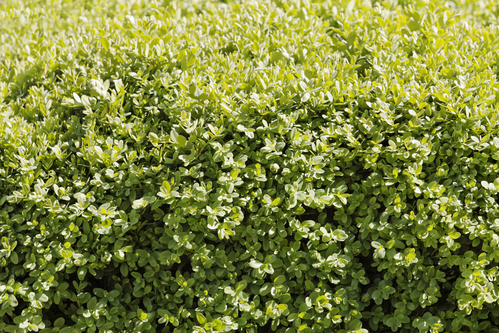
As with all plants, be sure you’re placing your boxwood shrubs well. Boxwood typically does best in partial or full sun, so don’t plant it on the shady side of a house. Boxwood shrubs prefer well-drained soil, although it’s not very picky about pH. In very hot climates, try to plant your shrubs so they’ll receive some shade during the heat of the day, and do your best to water them semi-regularly so they don’t wilt. Try to remember your climate will impact the health of your boxwood.
Boxwood is generally hardy, but it has a few pests to watch out for. The most notable is the boxwood leaf miner, which causes the leaves to turn yellow. You can spray the leaves with insecticide to kill the plant, or try for an organic option such as neem oil.
You may also notice phytophthora root rot, a fungal infection. The fungus kills the roots, so the plant has a harder time taking in moisture and nutrients, and eventually begins to die back. To prevent this, make sure you’re not overwatering your boxwood shrubs, and ensure the soil is draining well.
Winter bronzing is a phenomenon where a boxwood’s leaves turn orange in the cold. This isn’t fatal to the plant, but many gardeners find it unpleasant to have. Winter bronzing is often caused by wind exposure.
To avoid winter bronzing, try to plant your boxwood shrubs such that they’re sheltered from freezing winter winds. If your ground isn’t frozen, give your shrubs a deep watering, especially if you live in a region with dry winters. You may also consider using a slow-release fertilizer in spring and fall. If your boxwoods are still bronzing, try spraying the leaves with an anti-desiccant, to keep their moisture in.
Though it takes dedication to reach its full potential, boxwood is a beautiful foliage plant that’s a staple of many gardens. If you plan to install boxwood shrubs around your home, get in touch with us and we’ll walk you through the process. Contact us at DK Landscaping for more gardening tips and advice.
How to Transplant Shrubs in Summer
The best times of year to transplant trees and shrubs are spring and fall; however, certain situations may make it necessary to move your plants outside of those seasons. For example, you may want to take your shrubs with you if you are moving or you may have to move the plant because of the weather.

If you find it necessary to move a plant during the warmest part of the year, you will need to take certain steps to ensure its health. Here are some tips on how to move shrubs in the summer without harming them:
- Choose the Right Location
Transplantation represents a dramatic change and a plant will have to adapt to its new environment slowly in order to survive. This means that you will have to keep factors like sunlight, soil drainage and soil pH in mind when choosing a new location. - Dig an Appropriate Hole
You will need to dig a hole that is approximately twice as large as the shrub’s root system. The additional space allows the roots to grow into the new site comfortably. - Carefully Remove the Shrub
Work carefully to avoid damaging the root system when uprooting shrubs. You will want to take as much of it as you can. You will also want to move some of the soil from the old location to the new one. You can place larger shrubs on a tarp and drag them to the new location along with some of the soil. - Add Adequate Water to the New Hole
You will want to wet the hole thoroughly before placing the shrub into it but avoid oversaturating it as this can cause the shrub’s roots to rot. - Place Shrub in the New Hole
Along with the shrub, place some of the soil from the old location into the hole as well as some potting soil. Pat the soil down around the base to ensure that the shrub stays upright. You can add watering stakes to the ground so that the shrub can water at root level but this is not essential. Be careful to avoid damage to the roots when installing the watering stakes.
The quality of your landscaping plays a major role in your ability to enjoy your yard and in your property value. If you need help with moving shrubs or with any other aspect of landscape maintenance, contact us today. Our experienced landscaping crews know how to move your shrubs and trees quickly and without damaging them.
Planning and Maintaining a Shrubbery
Rock gardens and shrubberies might be the two best ways to add dimension to your landscaping efforts without breaking the bank or giving yourself more work down the road. Just like a rock garden, shrubberies are coming back in style!
Shrubberies are actually easy to maintain and take care of as well. Shrubs are technically woody plants that are far shorter than most trees yet have a network of stems that can really liven up a backyard or add a little privacy to your home’s front facade.
Flowering broom shrubs and rhododendrons even look beautiful in their own right and don’t need too much support from your annuals and perennials to enliven your home.
That said, a lush lawn never hurts, so if you need help in that department DK Landscaping is here to lend a helping hand. DK Landscaping can also help with irrigation.
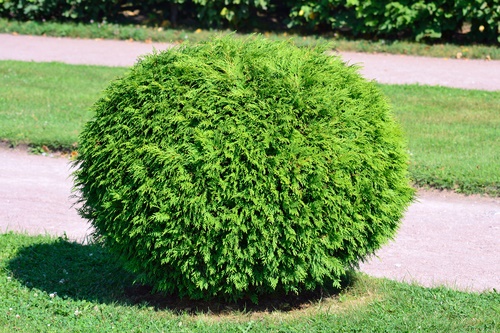
Planting a Shrubbery on Your Property
Shrubs are normally under ten feet in height and can either be evergreen or deciduous. This means that you can expect to find two classes of shrubs – one of which loses its leaves every autumn and then grows them back come springtime (deciduous) and the other kind of shrub retains its leaves on a year-round basis (evergreen).
- Leaving Room to Grow
Two other factors that you need to consider right off the bat is the maturity of the shrub that you’re interested in and, secondly, making sure that that shrub has enough room to grow without crowding out its neighbors.
The maturity and species of the shrub you go with will go a long way in determining how much space you need between each shrub and whether you’re letting in too much (or too little) sun to all of the shrubs you’ve planted as they go along in their growing cycle.
As an example, a shrub that’s much more bush-like and grows vertically like a arborvitae will require less sun, root space, and maintenance since it’s an evergreen and its stems don’t tend to blossom horizontally.
Bamboo palm or barberry, on the other hand, are actually quite low to the ground and need a little room to blossom out horizontally, so you’ll want to leave adequate space between each one and enough daylight so that the sun can reach down and nourish each individual shrub.
- Dig a Wide Hole
After you’ve picked out which shrub goes with the surrounding flowers and accessories in your yard, you need to transplant your shrubs and get them into the ground safely.
Digging a hole double the width of your shrub’s root ball is a good way to ensure that the roots get nourishment. After you’ve dug your hole then make sure to jostle the soil around slightly so that you’re not dealing with packed soil and your shrubs can continue to get nourishment.
- Transplanting the Shrub
When your hole is dug, carefully lower the shrub into place and put soil around the base. Then you’re going to want to spread out some mulch at the shrub’s base – just make sure that you go no more than six inches deep with your mulch.
- Regular Maintenance and Watering
Shrubs grow best in moist conditions that avoid too much saturation.
This means that regular watering from March to August in four-season climates should, in conjunction with some help from the sun and mother nature, provide most of the nourishment that your leucadendrons, rhododendrons, buckthorns and butterfly roses need to flourish.
An irrigation system is one of the best ways to prevent water waste and over-watering. For more on shrub maintenance and irrigation, contact DK Landscaping’s specialists today.
Protecting Your Landscape From Frost Bite
The temperatures in Northern California are beginning to drop which means winter will be before us, before we know it. Night time temperatures that get down to freezing and below will damage some trees and plants if you don’t take precautions against frost. These low temperatures can begin late November and continue through February and beyond.
DK Landscaping helps you prepare your landscape and provides tips to protect your delicate plants from frost bite.

WINTERIZE
Fall is prime time to clean up your landscaping and remove the dead landscaping before it gets too cold. Removing dead plants can also stop the growth and spread of fungi that could infect your plants’ new growth in the spring.
PLANT
Planting trees and shrubs in the fall is a an optimal time before the first frost arrives and best time to take advantage on some great end of the season deals. Planting in the fall gives roots plenty of time to become established before the next growing season begins. Not only will you get to enjoy the changing leaves for a brief time, you will also put less stress on your young trees because of the cooler weather and rain conditions fall offers.
MULCH
Mulching can be a great first step in preparing for winter’s frost. If you are unfamiliar with mulching, check out our previous blog post called Mulch About Fall. There are many benefits to mulching your lawn and plants, especially before winter. Mulching in the fall can help protect your plant’s roots as well as help them retain moisture during the cold, dry winter.
Just a few preparations for winter can guarantee that your landscaping will come back fresher than ever in the spring.
For more information on the care of your landscape, please contact David or Kathy Lee from DK Landscaping (707) 280-3632.
Mulch About Fall

Did you know that mulching in the fall is just as important as it is in the spring and summer months? We mulch in the spring and summer months to suppress weeds, retain moisture and feed and warm the soil. However, when the temperatures begin to drop and the ground freezes, root systems can be exposed. The primary reason for winter mulching is to protect our plants from the harsh conditions of winter freezes, thaws and winds. Mulch acts as an insulator to balance the temperature creating a warm, heavy blanket of protection.
Neglecting to mulch in the fall can be damaging to your plants in the spring season. And the cost of mulching is nothing compared to the cost of replacing some of your favorite trees and shrubs. It also adds a beautiful aesthetic to your landscape in the winter months.
Using fall leaves as organic mulch is a great benefit to your landscape. They will break down over the course of the wintertime and create a layer of nutrients for your plants to draw from. Adding a layer of leaves over your perennials will help regulate soil temperature of the wintertime, as well as give new shoots a protective blanket as they enter the world in the spring.
DK Landscaping offers mulching installation in Sonoma County. Contact us for more information on the benefits of fall mulching (707) 280-3632.


